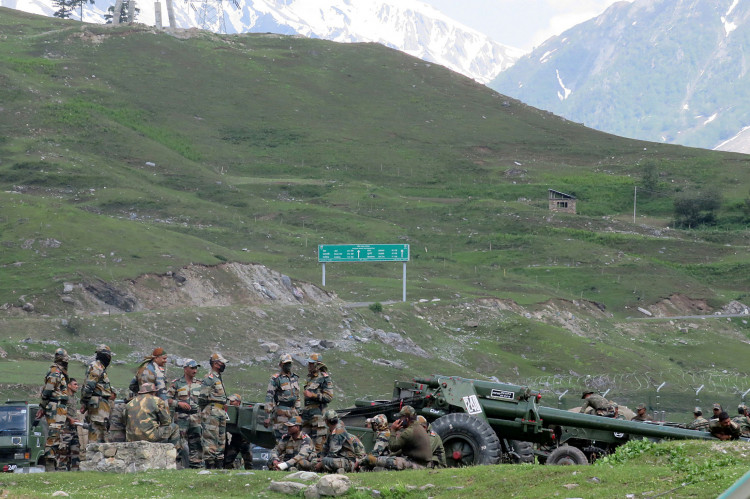The Indian Army still estimates any war with China at the high-altitude and mountainous Ladakh region it controls might last up to 10 days, but is stockpiling weapons and ammunition for a conflict lasting six times as long.
This war will begin with a massive Chinese assault across the Line of Actual Control (LAC) in Indian administered Kashmir with Ladakh at the center of action, said a senior officer of the Indian Air Force (IAF) who spoke anonymously to Indian media. The Chinese offensive will likely be a classic Soviet-style attack featuring massive infantry assaults by men of the People's Liberation Army Ground Force (PLAGF) focused on a few key points.
The infantry attack will be heralded by intense artillery and tactical rocket bombardments, and unrelenting attacks by People's Liberation Army Air Force (PLAAF) warplanes. Tanks and other armored fighting vehicles will be of limited usefulness in the rugged and mountainous terrain.
This conflict, like the others preceding it, will be an infantry war. China's aim will be to seize as much ground as possible before the fighting peters down from whatever cause.
"This is the old Soviet way of fighting a war, with troops based in depth areas providing the air-defense cover," said the officer.
The Indian Army can withstand this Chinese offensive, said the officer. It controls much of the high-ground overlooking the strategic roads through which any Chinese offensive must pass.
He asserted the Indian Army is prepared to fight an intense, 10 day-long war. The army has enough ammunition available for 40 days of fighting, while its inventory of ammunition and bombs can last 60 days.
"Any India-China hostility is unlikely to continue at an intense level without global intervention beyond 10 days," he noted.
The air forces of both sides will play critical roles in this war. He revealed the IAF's "disperse, absorb, recoup and retaliate" strategy has been war-gamed to such an extent the IAF feels confident it can repel the Chinese aerial and ground assaults.
The IAF can put more warplanes in the air and strike faster because it has more air bases closer to the front than does the PLAAF. It recently reinforced its air strength with the addition of five new Dassault Rafale air superiority fighters at the Ambala Air Station in Ladakh.
Looked at from a purely military point of view, the spate of clashes in the Ladakh region between Indian and Chinese troops are fights for high ground, which are the keys to victory in mountain warfare.
An armed clash between the Indian Army and the PLAGF, which looks likely, will occur on high altitude, mountainous terrain. The Ladakh range and the Pangong range where tensions run high rise some 20,000 feet above sea level. This means unimpeded observation offered by high ground is essential to any successful attack and defense.
The Indian Army also controls the key heights overlooking the PLA's deployments on the Finger 4 ridgeline on the northern bank of Pangong Tso, where rival soldiers are deployed only a few hundred meters from each other.






